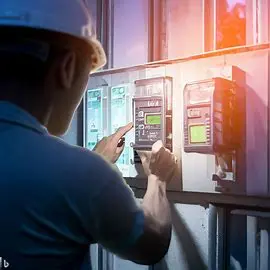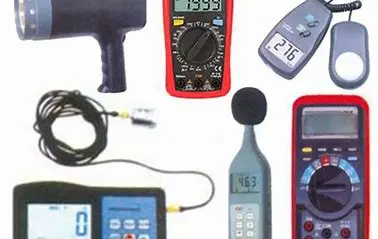
Introduction
Let’s take you on the Process of How to Install a Tamper-proof Energy Meter: Energy meters are devices that measure the amount of electricity consumed by a household or a business. They are essential for billing purposes and for monitoring energy efficiency. However, not all energy meters are created equal. Some of them can be easily tampered with, leading to inaccurate readings and potential fraud.
To prevent this, you need to install a tamper-proof energy meter that has security features to deter unauthorized access and manipulation. A tamper-proof energy meter can also protect you from power surges, voltage fluctuations, and other electrical hazards.
But how do you install a tamper-proof energy meter? It may seem like a daunting task, but it’s actually quite simple if you follow the right steps. In this blog post, we’ll show you how to install a tamper-proof energy meter in 10 easy steps.
Instruments Needed

Before you start, make sure you have the following equipment and tools ready:
- A tamper-proof energy meter of your choice
- Mounting hardware (such as screws, nuts, bolts, etc.)
- Electrical wiring (such as wires, cables, connectors, etc.)
- A screwdriver
- A voltage tester
- Safety gear (such as gloves, goggles, etc.)
Step 1: Turn Off the Power
The first and most important step is to turn off the power supply to the area where you want to install the energy meter. This will prevent any electrical shocks or injuries while you work. You can do this by switching off the circuit breaker that controls that area. If you’re not sure which one it is, you can turn off the main power supply to be safe.
Step 2: Choose a Location
Next, you need to choose a suitable location for your energy meter. It should be close to the main power source and within the approved specifications for installation. You also need to make sure that the area is clean and dry, as moisture and dirt can damage the meter.
Step 3: Install the Base
The base is the part of the meter that attaches to the wall or panel. You need to install it securely using the mounting hardware provided by the manufacturer. Make sure it’s level and firmly fastened to avoid any movement or vibration.
Step 4: Connect the Wiring
Now, you need to connect the electrical wiring to the base. There are two types of wiring: incoming and outgoing. The incoming wiring is the one that comes from the power source, while the outgoing wiring is the one that goes to your appliances or devices. You need to follow the manufacturer’s instructions carefully for proper wire connections. You can use wire nuts or terminal blocks to secure the connections.
RELATED
The Cost Of Installing A Tamper-Proof Energy Meter
Step 5: Test for Voltage
Before you proceed further, you need to test for voltage using a voltage tester. This will ensure that there is no power flowing through the wires that you’re about to connect to the meter. If there is any voltage detected, you need to go back and check your connections or turn off the power supply again.
Step 6: Install the Meter
Once you’ve verified that there is no voltage, you can install the meter itself. The meter is the part of the device that displays the energy consumption and has security features. You need to align it with the base and attach it securely using the fasteners provided by the manufacturer. Make sure it’s properly fitted and locked in place.
Step 7: Seal the Meter
To make your meter tamper-proof, you need to seal it using tamper-evident seals or security features recommended by the manufacturer. These can include stickers, labels, locks, tags, etc. They will help you detect any signs of tampering or interference with your meter.
Step 8: Restore Power
After sealing your meter, you can restore power to the area by switching on the circuit breaker or the main power supply. You can then check your meter to see if it’s working correctly and displaying accurate readings.
Step 9: Document Your Installation
The last step is to document your installation details for future reference or in case of any issues. You should record information such as:
- The serial number of your meter
- The date of installation
- The location of installation
- The wiring diagram
- Any other relevant details
You can keep this documentation in a safe place or share it with your utility company if needed.
Conclusion
Installing a tamper-proof energy meter is not as hard as it may seem. By following these 10 easy steps and adhering to the manufacturer’s guidelines, you can ensure accurate and secure energy monitoring while protecting yourself from electrical hazards and fraud.
We hope this blog post was helpful and informative. If you have any questions or comments, feel free to leave them below. And if you need any assistance with installing a tamper-proof energy meter or any other electrical service, don’t hesitate to contact us. We’re always happy to help.


